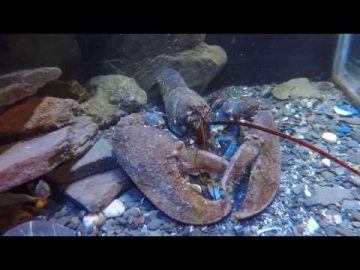by Jochen Szangolies

Consider the lobster. Rigidly separated from the environment by its shell, the lobster’s world is cleanly divided into ‘self’ and ‘other’, ‘subject’ and ‘object’. One may suspect that it can’t help but conceive of itself as separated from the world, looking at it through its bulbous eyes, probing it with antennae. The outside world impinges on its carapace, like waves breaking against the shore, leaving it to experience only the echo within.
Its signature move is grasping. With its pincers, it is perfectly equipped to take hold of the objects of the world, engage with them, manipulate them, take them apart. Hence, the world must appear to it as a series of discrete, well-separated individual elements—among which is that special object, its body, housing the nuclear ‘I’ within. The lobster embodies the primal scientific impulse of cracking open the world to see what it is made of, that has found its greatest expression in modern-day particle colliders. Consequently, its thought (we may imagine) must be supremely analytical—analysis in the original sense being nothing but the resolution of complex entities into simple constituents.
The lobster, then, is the epitome of the Cartesian, detached, rational self: an island of subjectivity among the waves, engaging with the outside by means of grasping, manipulating, taking apart—analyzing, and perhaps synthesizing the analyzed into new concepts, new creations. It is forever separated from the things themselves, only subject to their effects as they intrude upon its unyielding boundary. Read more »
